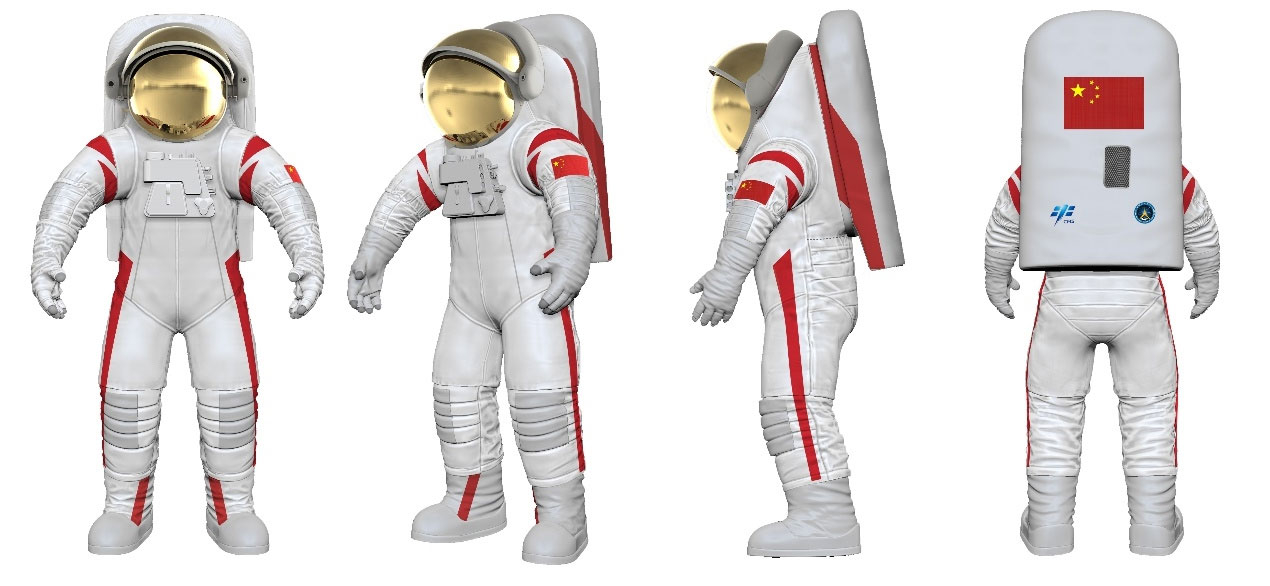The Chinese Manned Space Agency (CMSA) has unveiled to the public a spacesuit designed to land on the Moon for the first time. A contest to choose a name for it was also announced.
The presentation of the new product took place on September 28 at the 3rd Space Suit Technology Forum in Chongqing. As part of it, a promotional video was shown, demonstrating both the appearance and the main capabilities of the spacesuit. Taikonauts Wang Yaping and Zhai Zhigang were models. They performed a variety of movements including walking, squatting, bending, getting down on one knee and climbing stairs.
According to the developers, compared to the Feitian spacesuits used for Earth orbit operations, the new suit is lighter, designed with a focus on low-gravity operations and allows for more activities, including squatting and bending. Its shell consists of a complex fabric that protects it from space environmental factors and lunar dust. The helmet is equipped with a panoramic anti-reflective visor and long and short focal length cameras. A multifunctional integrated control console is located on the chest.
The lunar spacesuit also carries elements of Chinese culture. The red stripes on its upper parts are inspired by the ribbons of the famous “flying apsaras” from the art of Dunhuang. The general design of the lunar spacesuit is based on the style of traditional Chinese armor. The novelty hasn’t received an official name yet. It will be chosen at a nationwide contest.

The new spacesuit was developed as part of a program aiming to land taikonauts on the Moon by 2030. China is in the process of building a new Long March 10 launch vehicle, as well as a spacecraft and a descent vehicle that will help it accomplish this task. The taikonauts are expected to spend approximately six hours on the lunar surface as part of the first mission. This will be a prelude to more ambitious plans for a base at the Moon’s South Pole. It should be built in the 2030s.
We previously told you about China’s plans to launch a mission to deliver a sample of soil from Earth’s quasi-satellite in 2025.
According to Spacenews


